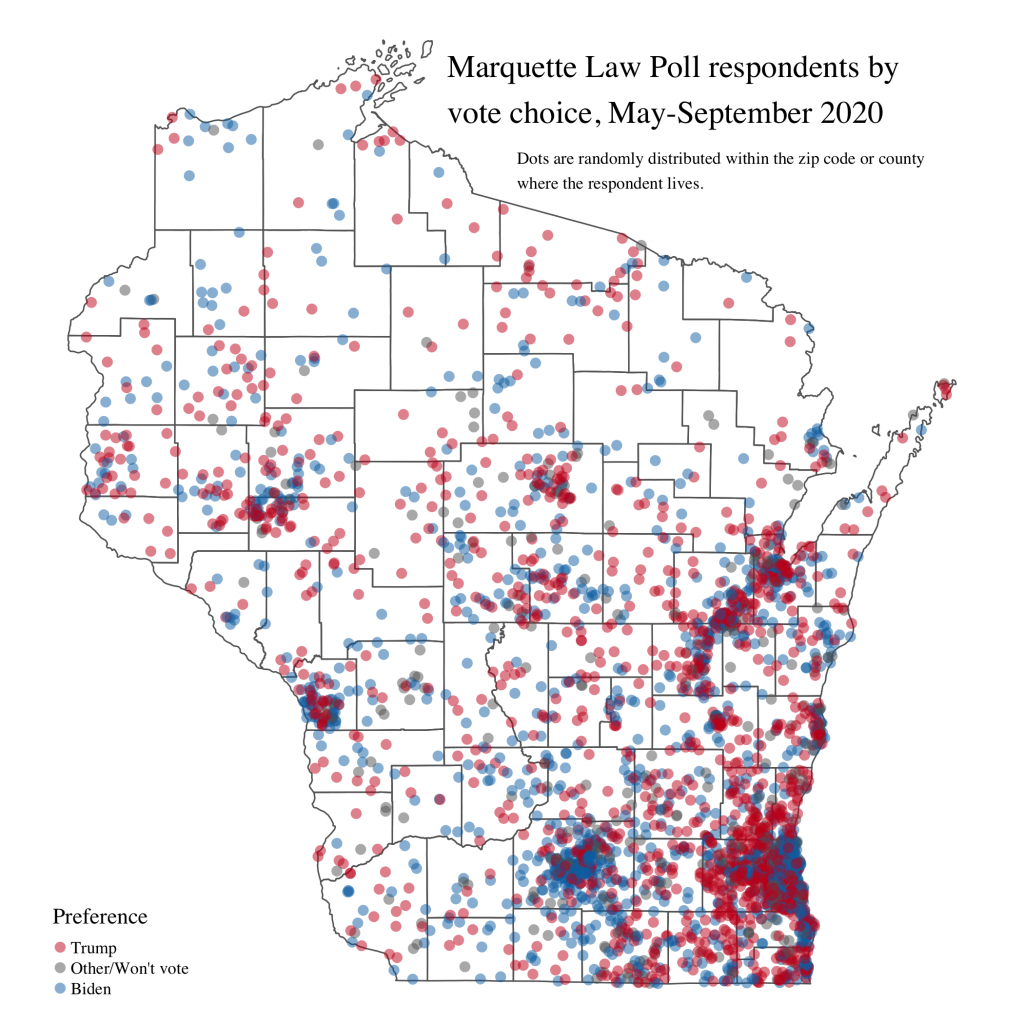Beyond the Horse Races, There is Deeper and Broader Value in Public Polling
This was published as an opinion column in the Milwaukee Journal Sentinel on November 15, 2020.
On August 11, 2020, the Marquette Law School Poll released a round of results that included some remarkable findings: 35% of Wisconsin voters planned to vote early by mail, and 81% of those voters planned to vote for Democratic candidate Joe Biden for president. Another 46% were planning to vote in person on election day, and 67% of them planned to vote for Republican candidate Donald Trump. And 12% were planning to vote early in-person and were pretty evenly split.
The numbers didn’t attract much attention from commentators. But they gave a big heads-up about what was likely to unfold nearly three months later, after the polls closed on November 3. There were going to be unprecedented numbers of absentee voters, and they were going to vote overwhelmingly for Biden. And a majority of in-person election day votes would go for Trump.
This became a key to understanding election night and week, not only in Wisconsin, but in Michigan, Pennsylvania, and several other states. Based on in-person voting, Trump took the lead in each one on election night. Results from absentee votes were reported more slowly. Biden won by big margins among absentees, and Trump’s early lead shrank and then disappeared.

